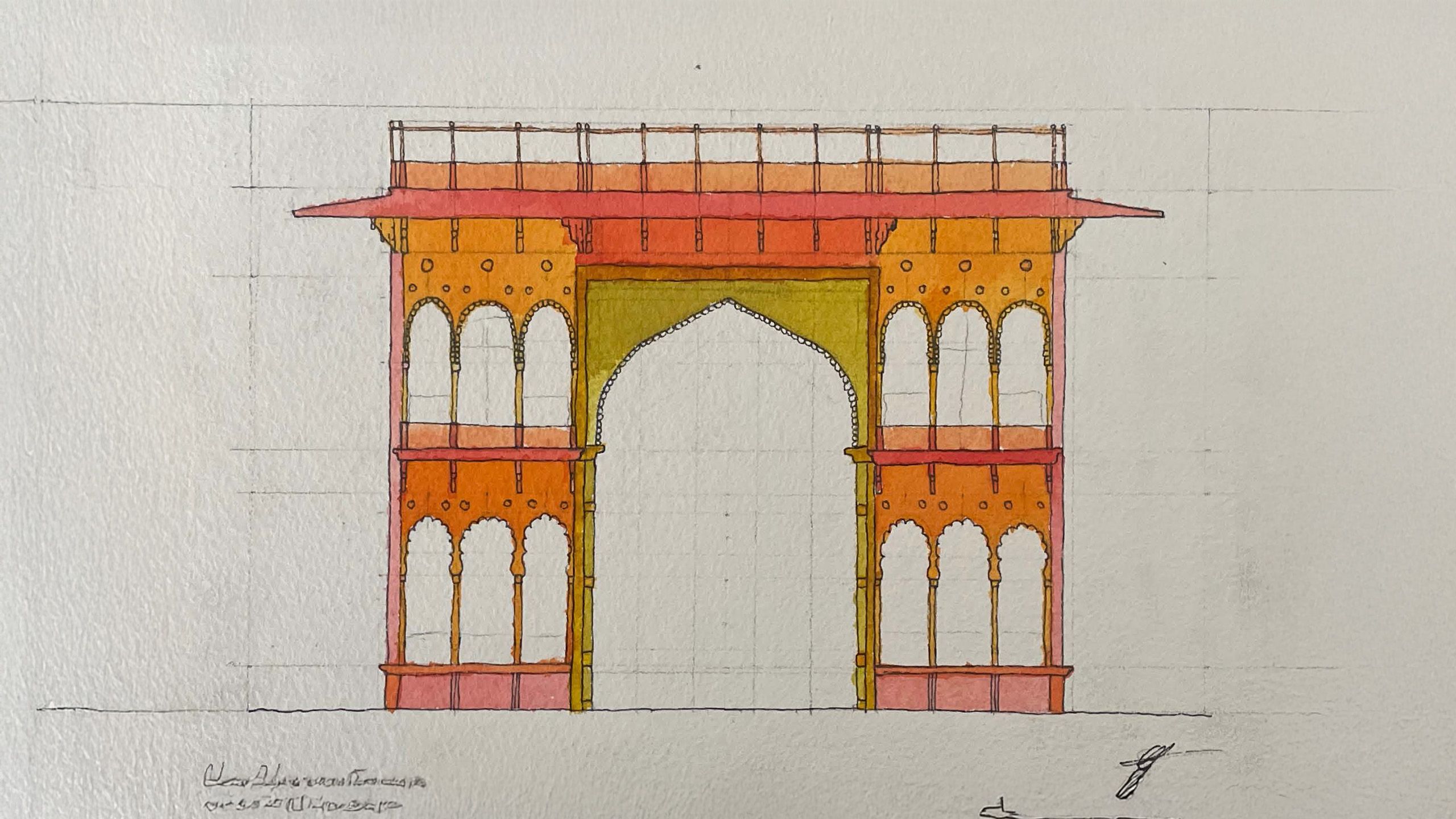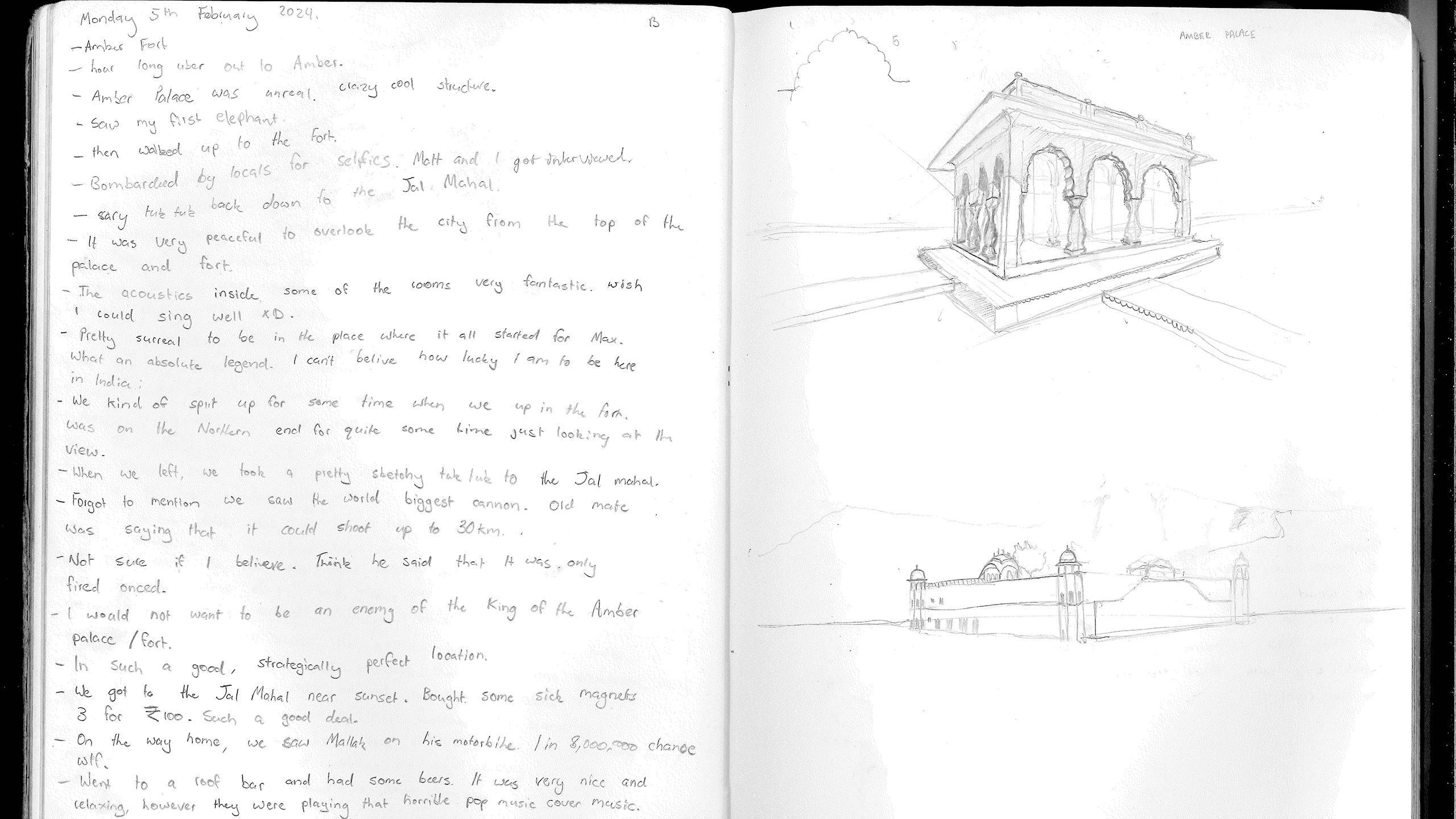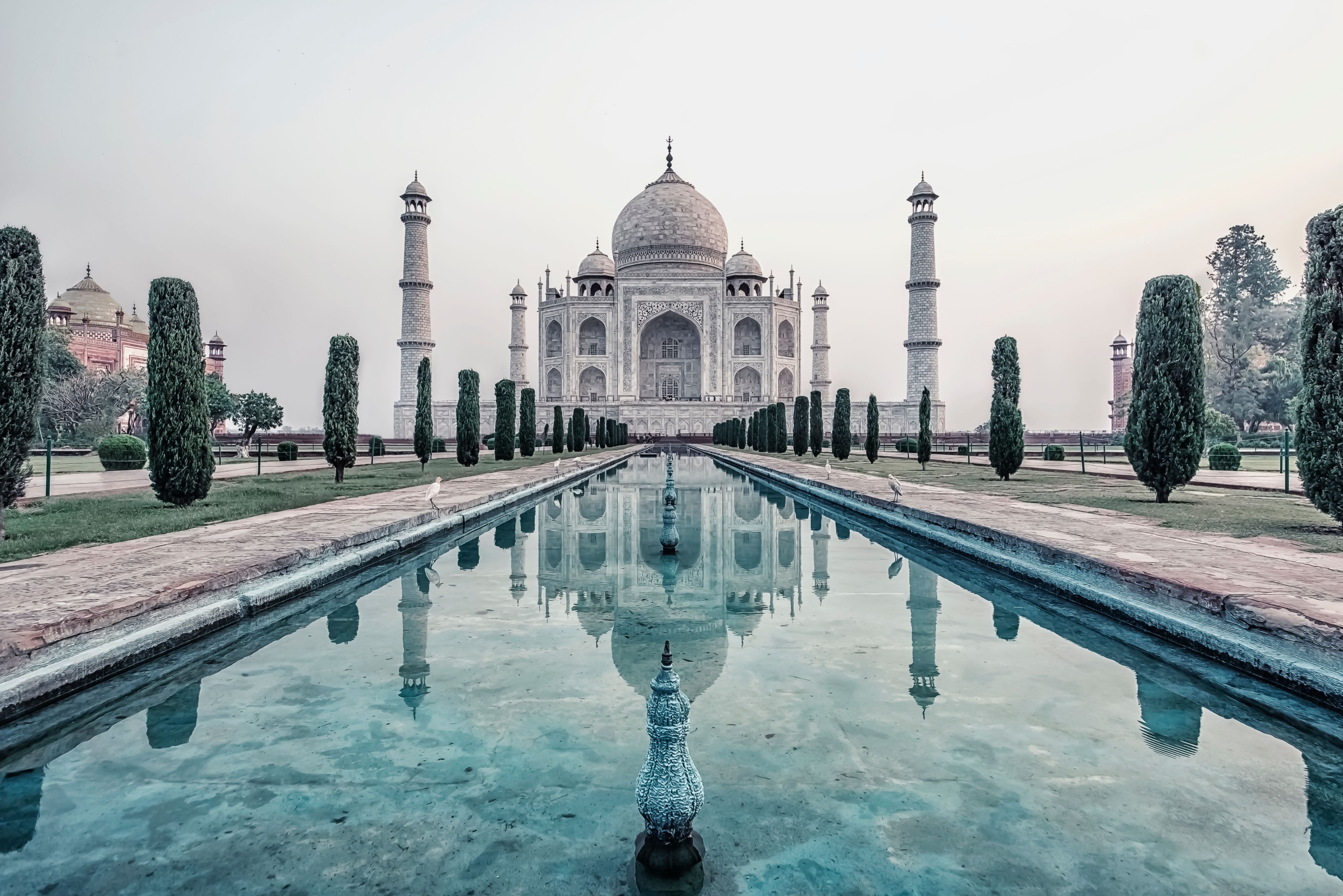From vision to voyage
How an architect's bequest sent 3 students to India

Wandering through the vast expanse of India with their sketchbooks in hand, UQ architecture students Tom Hallam, George Hickman and Matthew Schoutrop journeyed through the country together for 40 days, deepening their knowledge of their field and creating unforgettable memories.
The trio at the Taj Mahal. L-R: Matthew, Thomas and George.
The trio at the Taj Mahal. L-R: Matthew, Thomas and George.
![Scenic image of an orange sunset and clouds over an Indian city [with Black and White edit].](./assets/MGDnEnicJq/uq-contact-maxs-design-prize-sunset-bw-0.6-2560x1440.jpg)

For George, Udaipur in Rajasthan was a highlight. That, and exploring iconic Indian architect Balkrishna Vithaldas Doshi OAL's studio, Sangath, in Ahmedabad, which to his surprise had no internal lights but instead was internally lit through indirect sunlight and thoughtful architectural design.
Sketch of Udaipur by George.
Sketch of Udaipur by George.
“The city was like nothing I had seen before, just a maze of connected backstreets surrounding large lakes, engulfed in mountains,” George said.
“The architecture was unique to say the least – a mixture of roughened modernist buildings and rundown Haveli’s – yet it was the way the city felt which I enjoyed so much. It was calm, peaceful and welcoming.”
Tom's favourite place was Hampi – a small town full of architectural monuments.
"I timed my adventures so I could be there for the Holi festival, which is an ancient tradition that celebrates the arrival of Spring, new life and triumph of good over evil," Tom said.
Thomas covered in coloured powder – an aftermath of the Holi festival.
Thomas covered in coloured powder – an aftermath of the Holi festival.
"They celebrate the festival by a big bonfire at night, followed by throwing colourful powder on eachother while dancing to drums.
"I was targeted by the locals because of my hair. It was an amazing experience."
George and Thomas adventuring in India.
George and Thomas adventuring in India.
After day 40, when George and Matthew headed back to Australia, Tom spent time immersing himself further, trekking through the south of India with his drawing supplies and hiking bag before spending some time in Sri Lanka as well.
“I spent 4 weeks in Sri Lanka, and it was stunning. The tropical architecture by Geoffrey Bawa was mind-blowing, the food was delicious and the people were very friendly,” Tom said.
“After Sri Lanka, I had one month left in India, so I headed to Bangalore, a large city in the south, where I was able to get work experience for a fantastic Indian architect for a month.
“On the way home, I had an 18-hour stopover in Singapore and had an idea to do an architecture marathon in those 18 hours to see as much as I could.
“I made it back to Brisbane with all my belongings except my North Queensland Cowboys cap which I lost on a bus in northern India. I really hope someone is rocking it over there.”


This immersive, money-can’t-buy trip was made possible thanks to Max’s Design Prize, established in 2022 through a gift left in Max Horner’s Will. Max was a beloved teacher, architect and mentor at UQ, known for spreading his passion and expertise for design among the next generation of budding architects.
Now, 15 years after his passing, Max’s legacy lives on. His teaching style, favouring immersion over formal instruction, has carried over in this biennial travelling scholarship – awarded for the first time this year. Students like Tom, Matthew and George are granted the opportunity to undertake a drawing study of Indian architecture, embracing the chance to immerse themselves in the rich cultural heritage while honing their craft.
“Being the recipient of an award like this, it’s hard to not see that as a life-changing experience,” George said.
“Max devoted both his life (and afterlife) to teaching and being able to receive that indirect education has been like nothing else. I have grown, explored and learnt so much because of this experience – it’s difficult to put into words.
“India, and this prize at large, will remain a fundamental part of who I am for the rest of my life. I am proud and honoured to have received such a gift.”
L-R: Matthew, Thomas and George.
L-R: Matthew, Thomas and George.
Samay Zhouand, the Public Trustee of Queensland, praised Max’s Design Prize as testament to Maxwell Horner’s vision and generosity.
“Charitable giving makes a real difference to people’s lives, including by contributing to further education and by both preserving and developing art and culture,” Mr Zhouand said.
“We can see this in action in Max’s Design Prize, which helps bring to life Max Horner's passion for immersive education in a way that provides a lifelong benefit to students who receive the prize.
“As the Trustee for a number of charitable trusts, it’s always a privilege to see how the forethought of people like Max Horner to leave a philanthropic bequest continues to resonate for generations.”
Through Max’s Design Prize, his vision of exploration, innovation and generosity continues to shape the future of architecture, one student at a time.
Each year, many people like Max choose to make a gift in their Will to support causes that make a lasting difference. You can find out more here.









